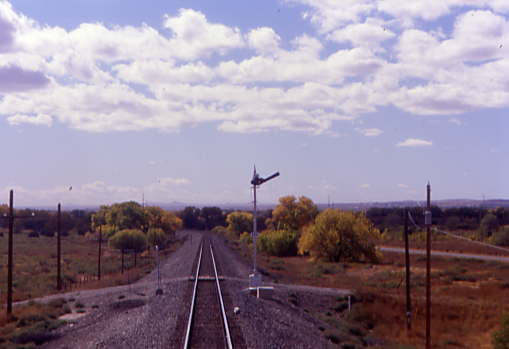
I received an e-mail from Bart Jennings regarding the autumn set of rare mileage trips over both the San Luis and Rio Grande Railroad and San Luis Central Railroad, sponsored by the Southern Appalachia Railroad Museum and sent my cheques for both trips then started planning how to get there. I obtained vacation days from work so I participate. Amtrak would be easy to take to La Junta and I could rent a car there. Guess what? There was no rental car company in La Junta and while Enterprise would pick one up and take them to Pueblo, it would be too late Friday morning to do anything. A conductor friend of mine, Jeff, suggested JJ Motors in Trinidad. I called them and then changed my Amtrak reservation to Trinidad.
I then called the Pueblo Locomotive & Rail Historical Society, operators of the Pueblo Railway Museum, and arranged a tour for 8:30 AM on Friday October 28th. The Pikes Peak Historical Street Railway Foundation was contacted via e-mail and a visit was scheduled for 11:00 AM that morning. The third group I contacted was the Manitou & Pikes Peak Railway and arranged a trip for at 3:00 the same day. I called Best Western Hotels and made reservations for two nights in Trinidad and Alamosa. Chris Parker would be joining me for these trips and decided to fly to Albuquerque and board Amtrak there. After the Sunday excursion, we would visit the Great Sand Dunes National Monument. With that planned, all Chris and I had to do was wait for our departure dates.
Pacific Surfliner 583 10/25/2006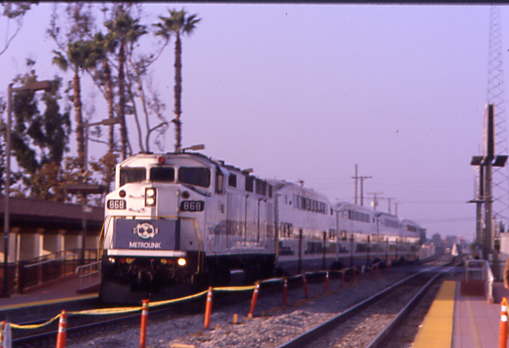
First, Metrolink 686 to Irvine arrived from Los Angeles.
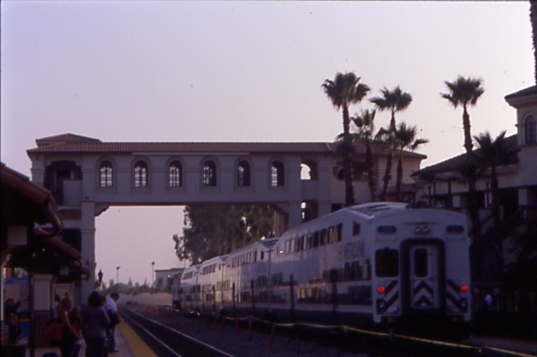
Once he departed, I heard another horn approaching from the south, which meant my train would soon be crossing 4th Street.
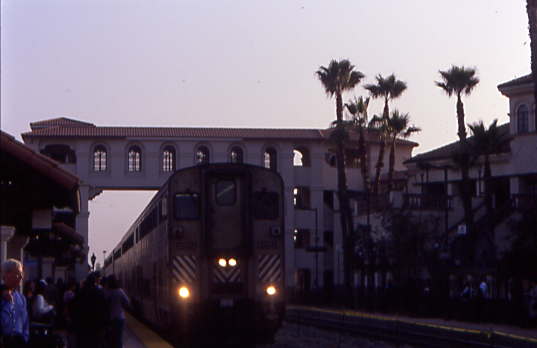
The train arrived and I chose a seat on the lower level of the cab car. The consist was Pacific Surfliner cab car 6905, Superliner coach 31021, coach 6400, coach/café 6304, Pacific Business Class 6852 and F59PHI 459 pushing. We departed on time and quickly stopped at Anaheim and Fullerton then made the sprint to Los Angeles, arriving early at Los Angeles Union Station. A walk down, over and up took me to Track 12 and my waiting train.
Southwest Chief 4 10/25/2006This train had P42DCs 8, 19 and 158, baggage 1754, transition 39026, sleepers 32060 and 32025, diner 38021, lounge 33042 and coaches 34075, 34024 and 34085. I chose seat 19, a large window seat in the 34024. I settled in and relaxed before departure time, listening to Keith Richards' "Main Offender". We departed on time as I switched to Deep Purple's "Come Hell or High Water" while I did several Sudoku puzzles. Conductor Pablo took my ticket on the way to Fullerton then there was a lengthy stop at Riverside when a drunken passenger was taken off the train and tried to reboard as it departed. The authorities were called and a Riverside station security guard sat with him as we left. I called it a night at that point. An Amish baby started to cry which was alright, but not the three passengers in our car who started talking loudly and using their cell phone, which kept people awake past Barstow. Every trip is an adventure!
10/26/2006 I awoke east of Flagstaff in the pre-dawn hour to a very clear morning and sat at a table in the lounge car waiting for the dining car to open as the Southwest Chief sped toward Winslow. When it opened, I was seated at a table with Otto, going to Albuquerque for the winter from Lakehurst, New Jersey, and Rob from Flagstaff, also going to the same destination. I enjoyed French Toast and sausage along with some interesting conversation then back at my seat, Rush's "Vapor Trails" was my next musical selection. West of Gallup, we stopped so I switched to Jeff Beck's "You Had It Coming!" while we waited for a BNSF freight train before we could cross over to the station track.
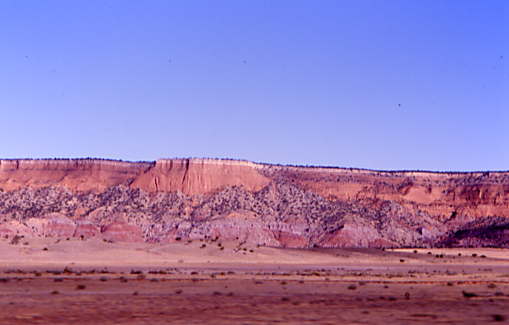
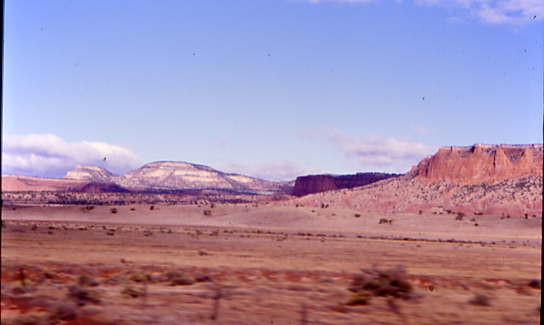
After we departed Gallup, we passed the red mesas of New Mexico. The Rolling Stones' "Voodoo Lounge" was the next musical selection of the morning then at Grants, the music was switched to Jethro Tull's "A Passion Play", followed by "Extra Thick as a Brick", the other Tull one-track album. That took me all the way to Albuquerque, at which we arrived ten minutes late and I detrained, first running into Conductor John Kennedy, then I saw Chris Parker. His flights via Phoenix had worked out and he took a city bus to the Alvarado Transportation Center next to the Amtrak station for just a dollar. Once we boarded, I showed Chris where to sit and we both returned to the 42 degree outdoor air.
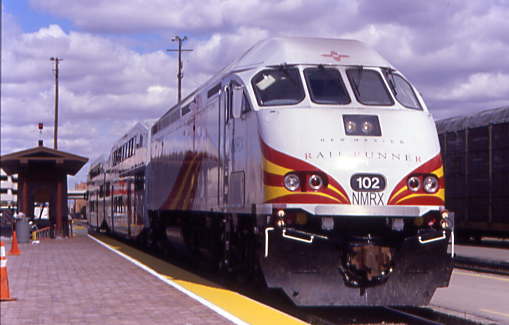

The New Mexico Rail Runner led by MP36PH-3C 102 built by Motive Power Industries in 2005.
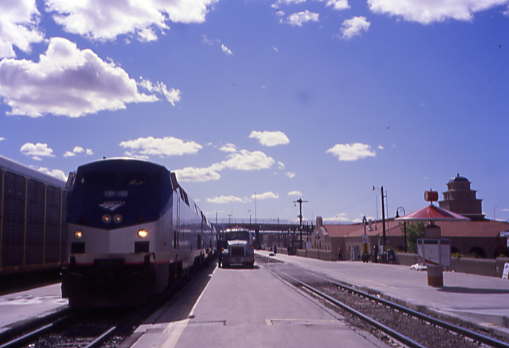
While the Southwest Chief was being refuelled during our station stop, Randy Jackson and his wife stopped by to visit with me. Randy rode with me on the Feather River Express earlier this year and would be on the Saturday and Sunday excursions. We talked until the all-aboard signal was given and the Southwest Chief departed ten minutes late. Chris went to the dining car for lunch and I went to the rear door for pictures of the semaphore signals in the Rio Grande Valley.
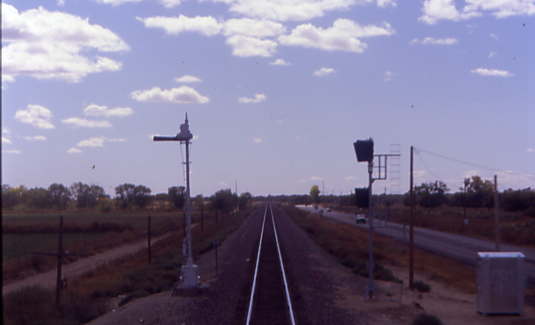
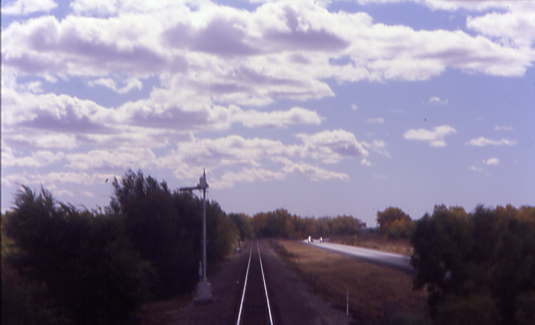
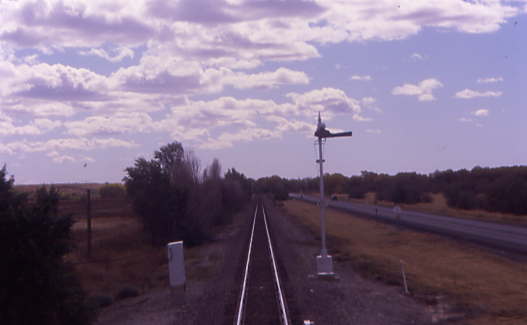
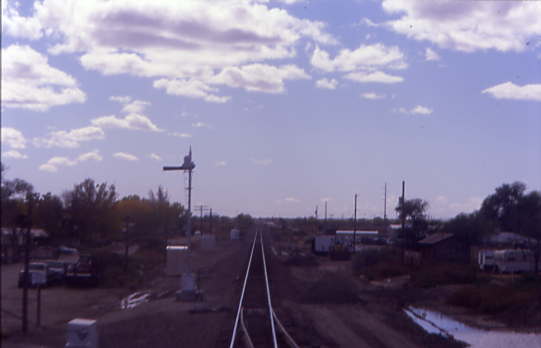
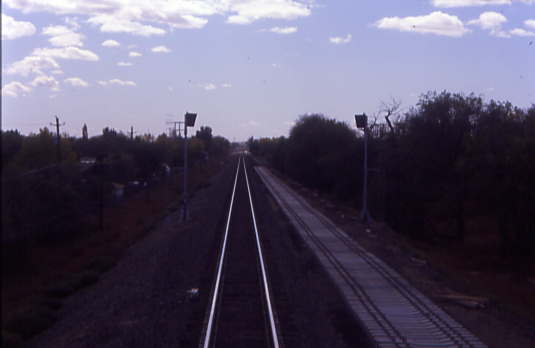
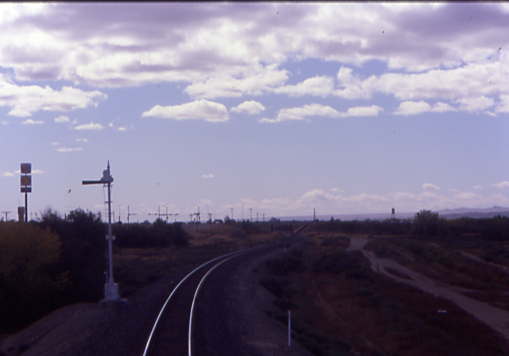
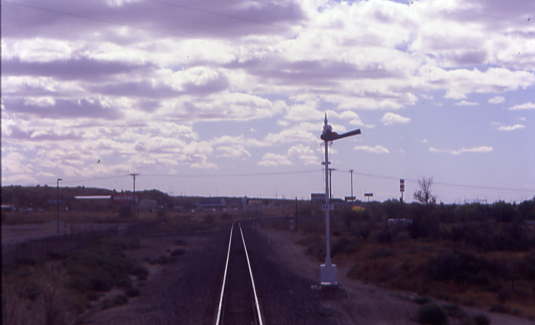
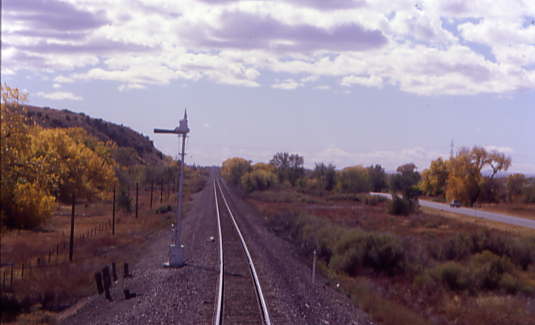

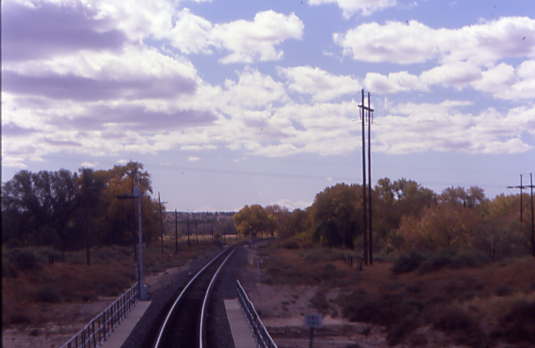
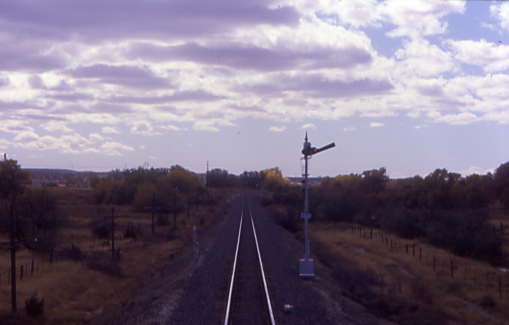
I forgot the signals just west of Lamy, so if all went correctly, I would photograph those on the return trip. We paused in Lamy before I returned to the back door for the journey through Apache Canyon through Canyoncito.
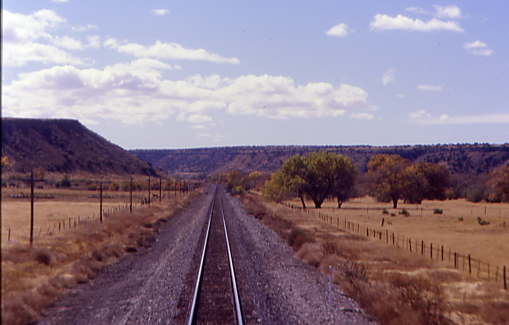
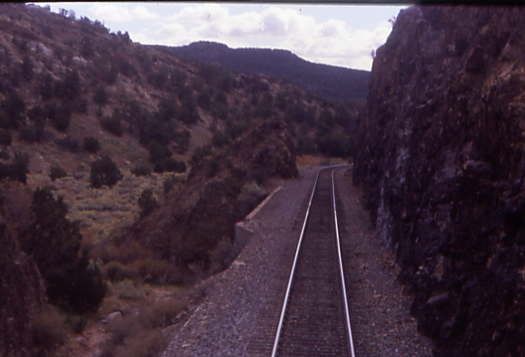
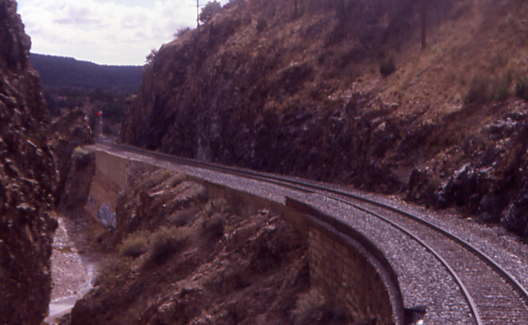
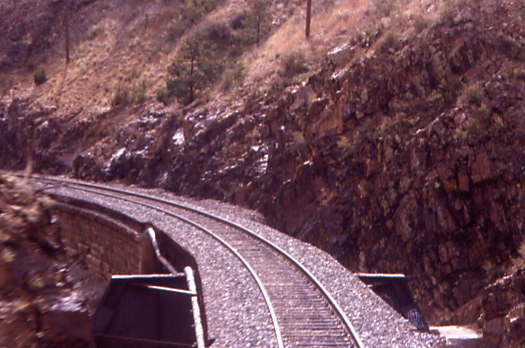
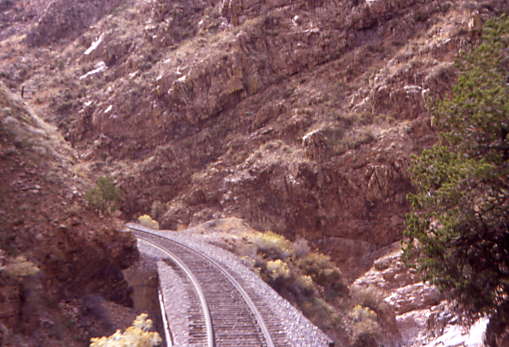
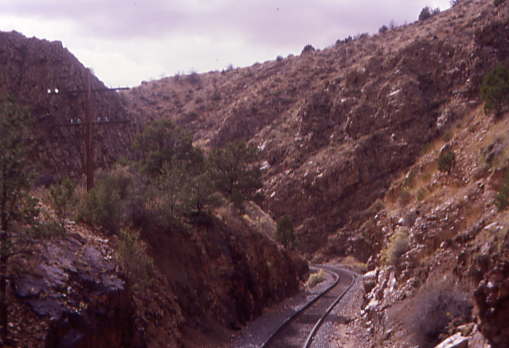
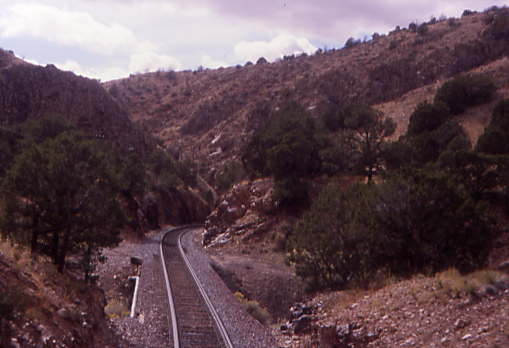
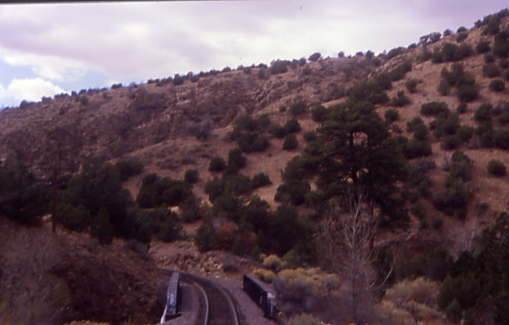
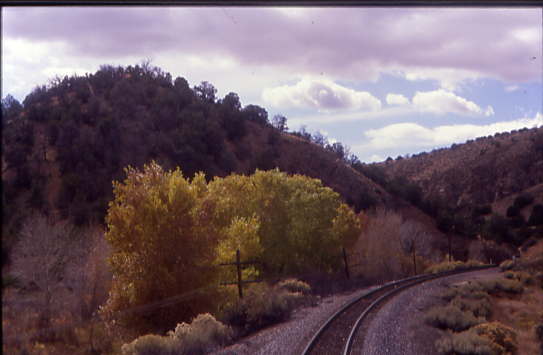
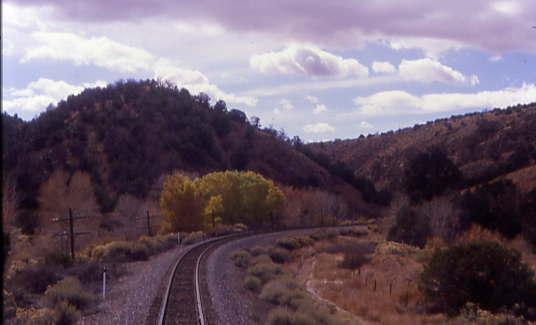
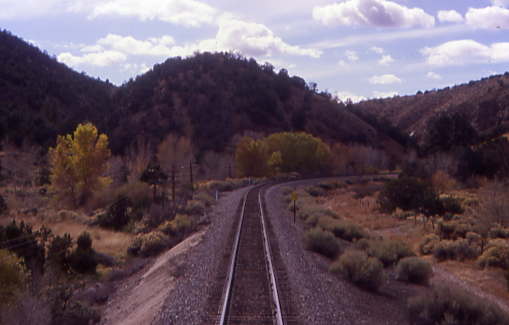
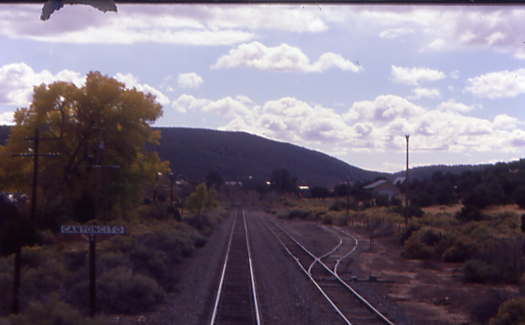
After that I went to the lounge car to visit with Chris and a few others passengers then returned to my seat to get a dinner reservation, but could not get one because all the early ones had been given out. Since we were getting off at Trinidad, we would not be able to eat. In 956,000 rail miles, I have never been unable to eat in a dining car on a train. Sam, the Dining Car steward, later found me and gave Chris and I a 5:30 PM dinner reservation. After we traversed the "S" curves, I went to the back door for more semaphore action.
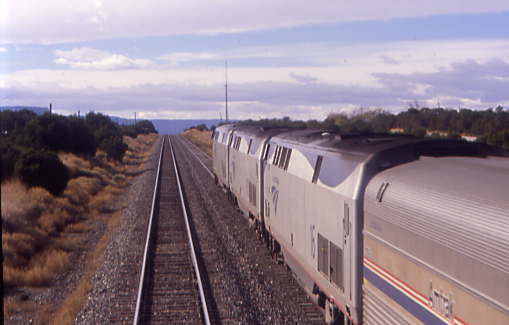
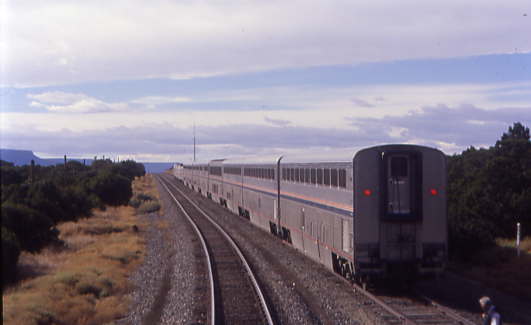
We met the westbound Southwest Chief at Sands.
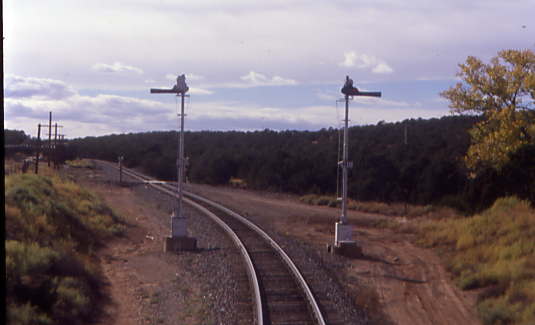
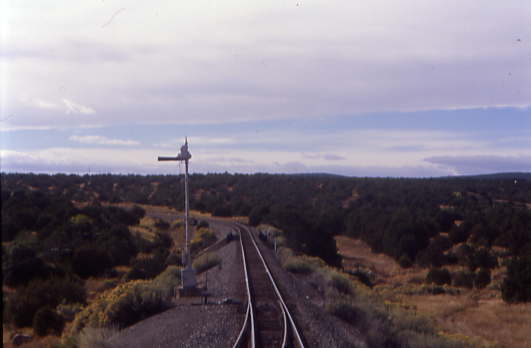
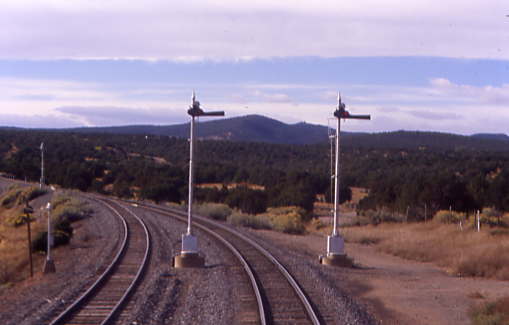
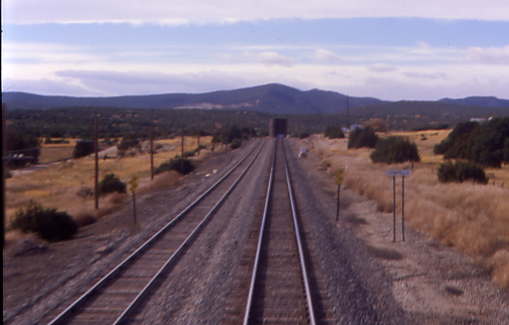
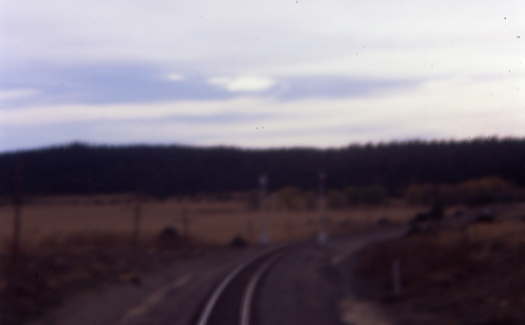
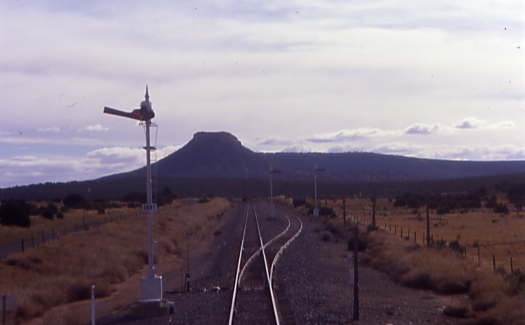
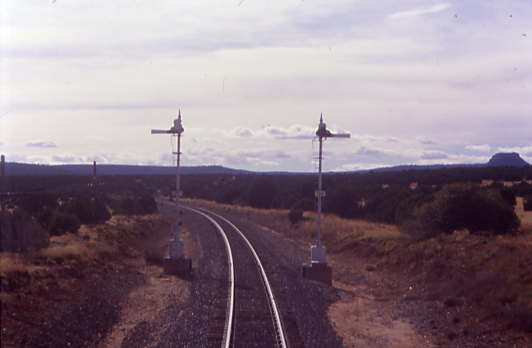
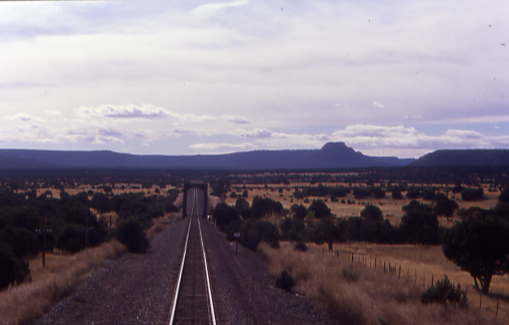
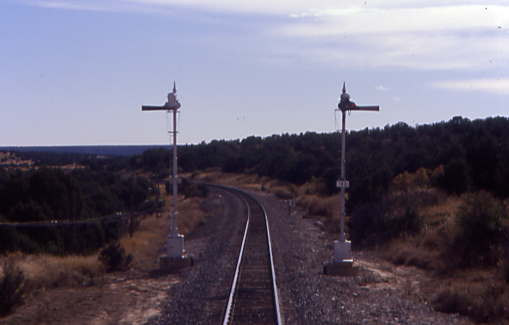
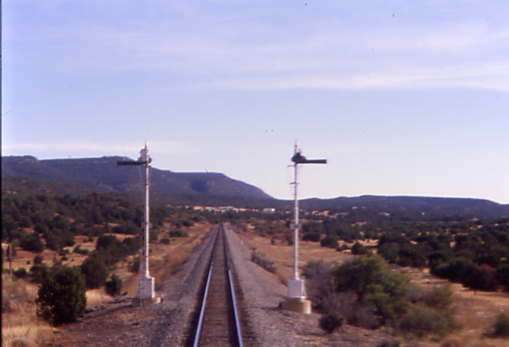
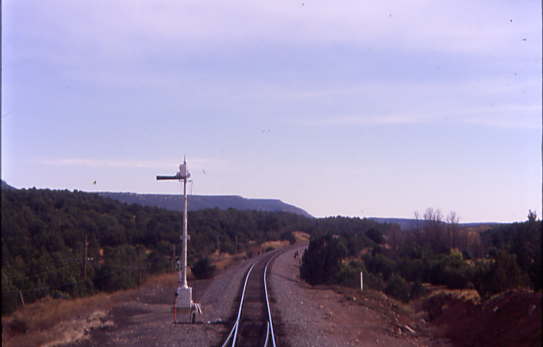
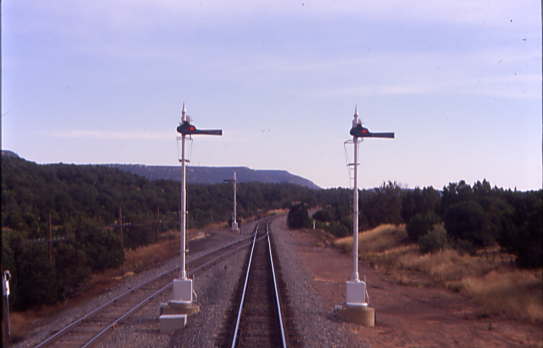
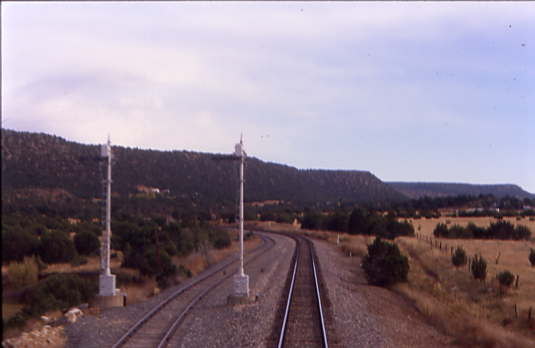
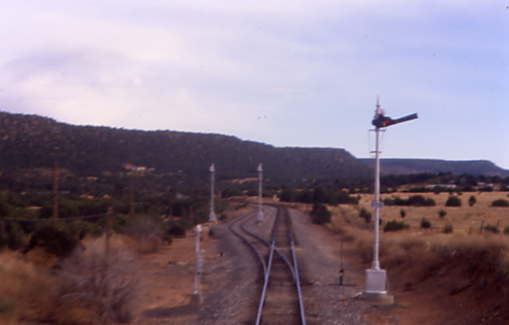
I photographed semaphore signals until just west of Las Vegas then returned to the lounge car while we did our station stop then returned to the rear door for the remaining ones.
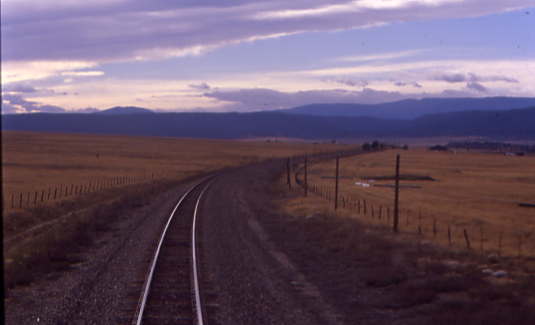
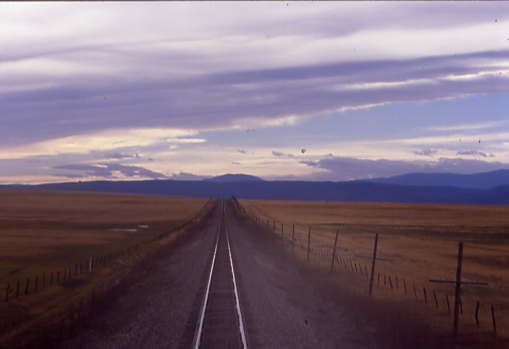
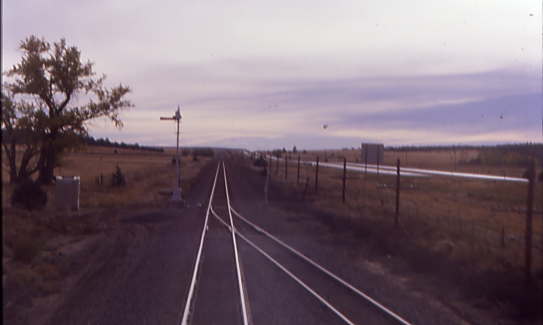
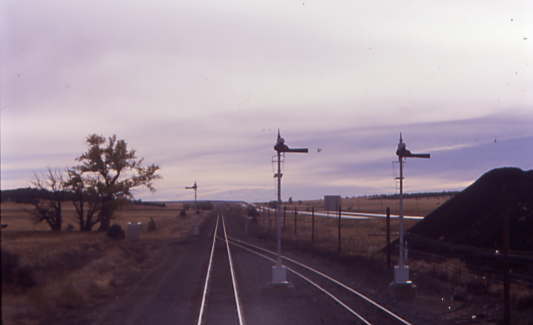
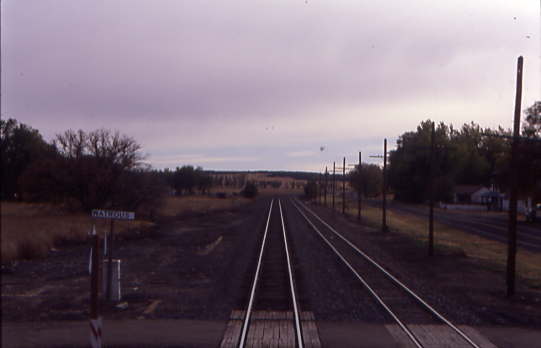
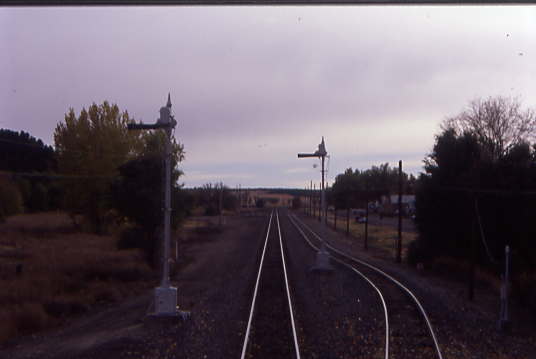
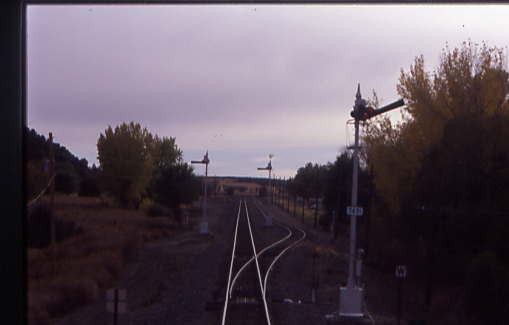
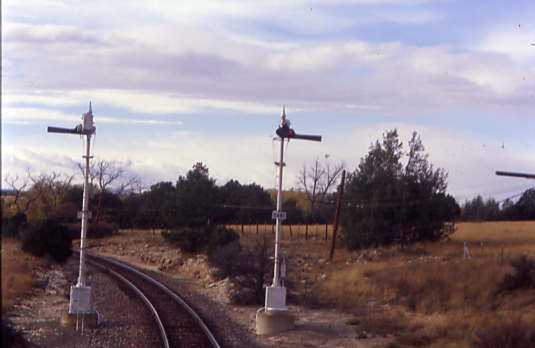
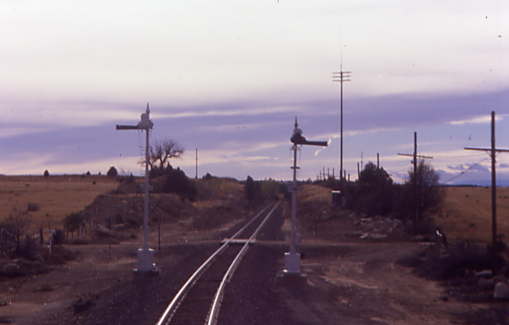
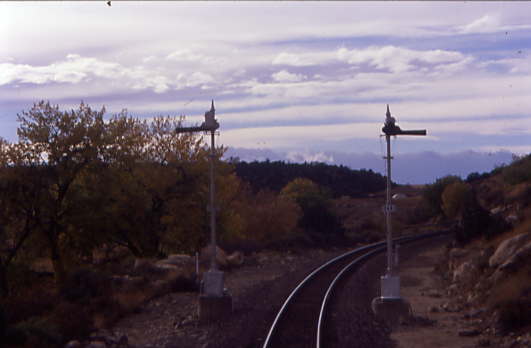
Splitting the semaphores.

Later we neared the edge of a storm which was supposed to be a blizzard in Colorado.

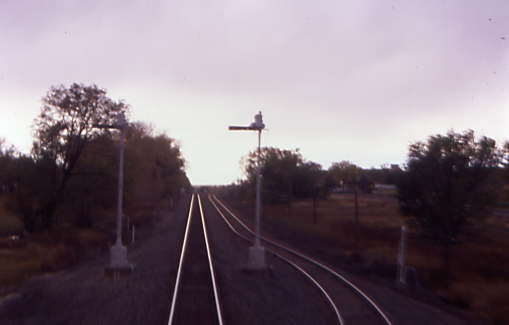
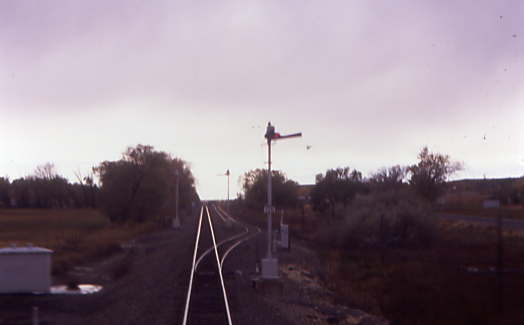
Wagon Mound.
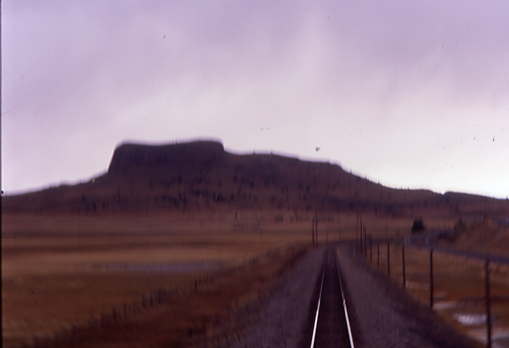
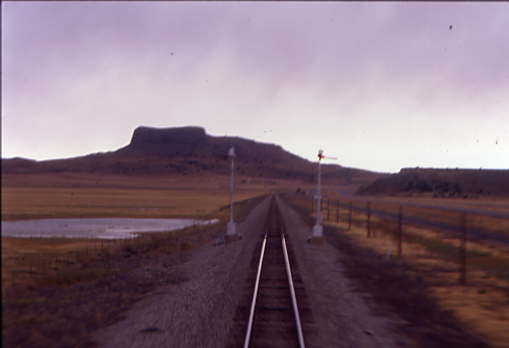
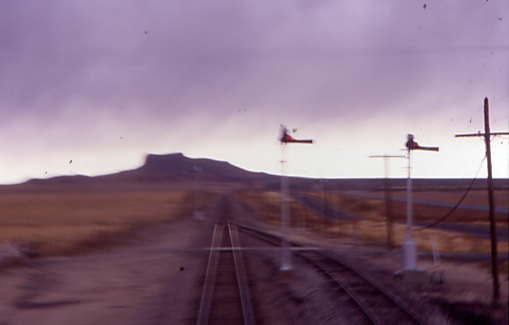
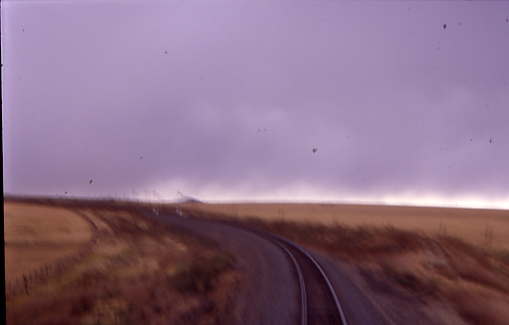
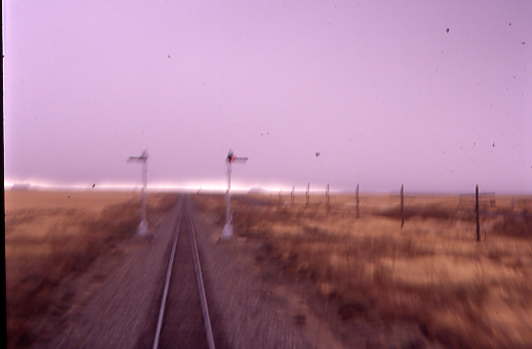
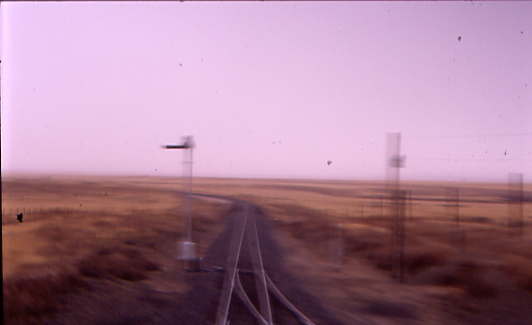
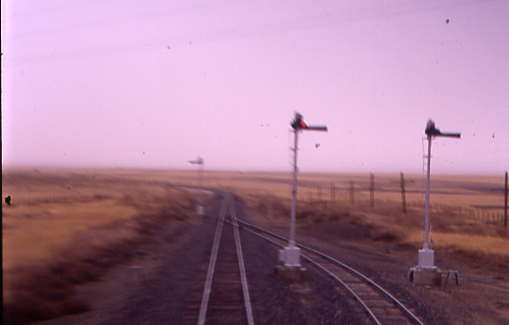
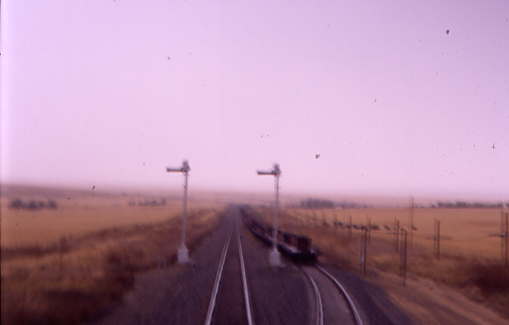
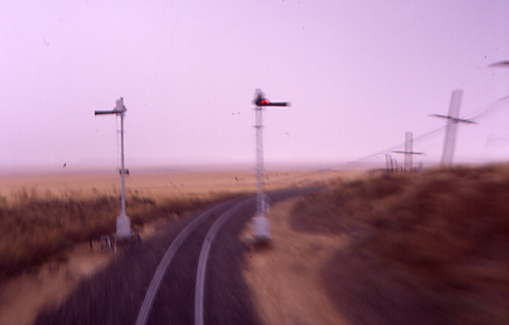
We passed Wagon Mound and I photographed the last of the semaphores as we neared Colmer then returned to the lounge car as the Southwest Chief went straight into the blizzard, arriving at 5:30 PM. Chris went outside into the snow and I went into the dining car to get seated for dinner and was seated with Marcia and Bill going to Chicago, and Chris soon joined us. He had the half-baked chicken and I enjoyed the pork chop.
The snow continued to fall fast, getting deeper and deeper as we sat in Raton. The wheels of the Thruway Bus for Denver were just spinning and it provided an interesting show during dinner since it could not leave the platform. We departed and I finished in the dining car just as the train entered the Raton Tunnel. I was back in my seat as we exited into Colorado and down the grade to Trinidad. Interstate Highway 25 was snowbound with traffic stopped, blocking the paths of the snowploughs trying to open the road. Our train, on the other hand, had no problem making it up and over Raton Pass and all too soon Chris and I were standing downstairs with Conductor John Kennedy as we entered Trinidad, where we detrained.
TrinidadWalking on the platform required boots and I was careful where I stepped, watching out for ice and water. At the parking lot, I found the representative from JJ Motors with the car, a Hyundai Sonata, with the boot open. We were good to go and after we loaded our luggage and he led us up the hill right to the Best Western Trinidad Inn where we checked in and received a downstairs room. Someone else was trying to get a room since he could not travel south, but received an offer of $150 at another hotel. We watched the Weather Channel with a "Big Go" for tomorrow's forecast which was sunny and clear then relaxed and enjoyed the rest of the evening as the storm ended.
10/27/2006 We awoke to a clear day for our drive north this morning. After a continental breakfast, we checked out of the Best Western Trinidad Inn and drove north on Interstate 25 then just outside of Walsenburg, we spotted a northbound BNSF coal train.

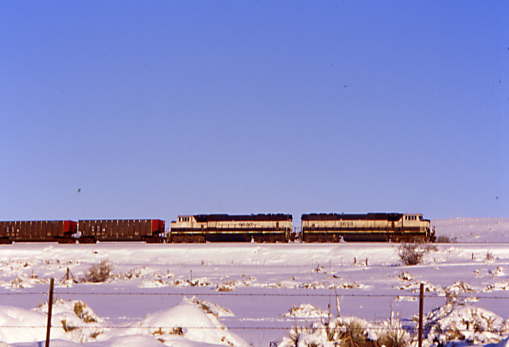
We took Colorado Highway 10 and set up east of town for the train which looked great in the bright sunshine running over the fresh snow, then resumed the journey on Interstate 25 bound for Pueblo. We exited at 1st Street and turned left on Union Avenue and turned left. At B Street, we turned right and there was Pueblo Union Station so we parked and walked to the north end where we found the Pueblo Railway Museum.
Pueblo Railway Museum 10/27/2006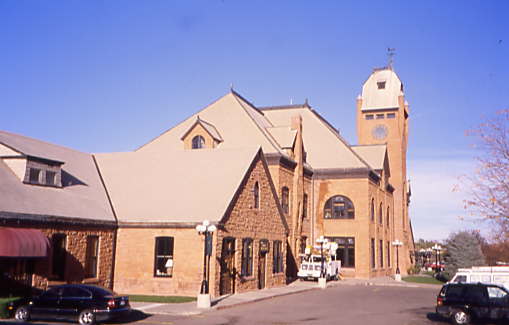
Pueblo Union Station built in 1890. The Pueblo Railway Foundation was formed in 2003 to continue and expand the collection and activities of the Pueblo Locomotive & Railroad Historical Society. The Pueblo Railway Museum is a program of the PRF. The mission of the Foundation is to operate, preserve and display railroad equipment and history. By displaying our historic artifacts to the public, our goal is to promote interest in railroading, and the preservation and study of its history, for the education and satisfaction of all.
We make this history come alive by operating this rail equipment during public events behind the Pueblo Union Depot, where our visitors can come and ride our trains. In addition, the PRF works with local schools to provide special tours as a class activity, and with the Public Library on summer educational activities. The PRF is an all-volunteer organization, with no paid staff. Administrative and fundraising expenses are minimized in favor of our policy to concentrate on our mission of preserving and interpreting railroad history, and sharing it with others.
Pueblo, in southeastern Colorado, has been a major rail and steel center since the late 1800's. Rail, and other steel products manufactured in Pueblo, helped build the railroads which settled the west. The expansion of the railroads contributed to the growth of Pueblo into the largest industrial center west of the Mississippi from 1880 to about 1940. To help the war effort during World War II, new heavy industries, including some new steel mills, began to open in California and other western states. Today, all rail manufactured in the western U.S. originates in Pueblo, just as it did in 1881.
For most of Pueblo's history, the main industry was the steel mill at Colorado Fuel & Iron, founded in 1892, now known as Rocky Mountain Steel Mills. The Colorado & Wyoming Railway was formed in 1899 as a subsidiary of CF&I. This railroad transported iron ore from southeastern Wyoming, and coal from the southern Colorado mountains to the Pueblo steel mills until the 1980's. Today, the C&W still maintains a small operation on five miles of track within the steel mill itself. The Pueblo Railway Foundation is proud to maintain the only collection of C&W locomotives and cars in operating condition.
Colorado and Southern wooden caboose 10538, built by the railroad in 1910 and used until 1958, and sign welcomed Chris and I to the museum.
A box car of unknown origin.
Great Northern express box car 2649 built by Great Northern in 1952.
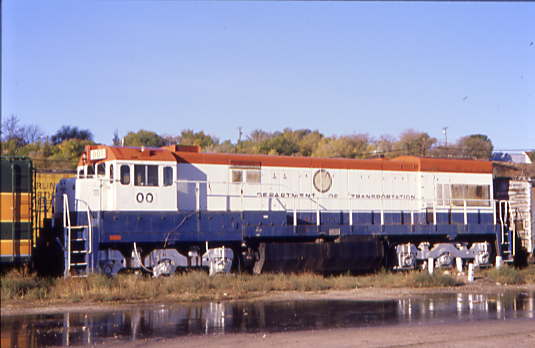
Department of Transportation U30C 001 built by General Electric in 1971. It was used as a power source for the Department of Transportation's subway car test tracks in Pueblo before a connection from the commercial electric power grid could be established.
Colorado and Wyoming caboose 103, built by the Colorado and Wyoming in 1953 from an ore car and converted to Loco Simulator, and numbered as 100.
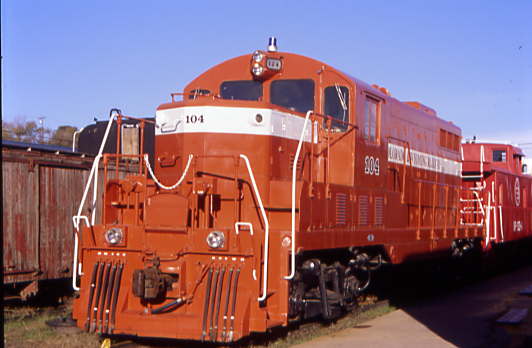

Colorado and Wyoming GP9 104 built by Electro-Motive Division in 1951.
Colorado and Wyoming caboose 3 built by Colorado and Wyoming from a locomotive tender.
A narrow gauge wooden box car, history unknown.
Museum scene.
American Steel Foundries modified dorm-lunch counter-lounge 1965, ex. Chicago and Eastern Illinois 601, exx. Chicago and Eastern Illinois 302, nee Chicago and Eastern Illinois 90, builder and year unknown.
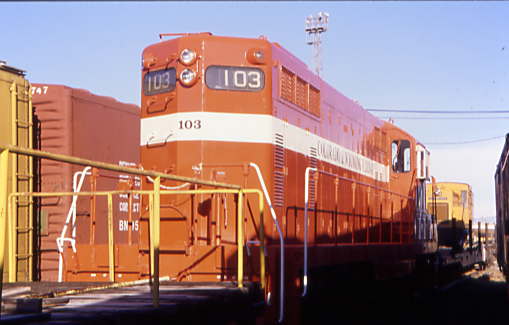
Colorado and Wyoming Railroad GP7 103 built by Electro-Motive Division in 1951. The C&W, a subsidiary of the Oregon Steel Mills, hauls coal, ore and steel on about five miles of track at the Rocky Mountain Steel Mills facility in Pueblo. It was donated to the museum in 2003.
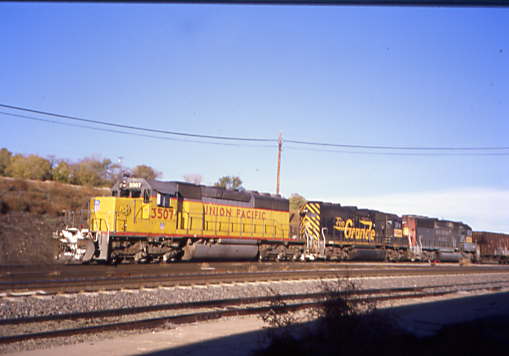
Union Pacific power switching at the east end of the Pueblo Yard.
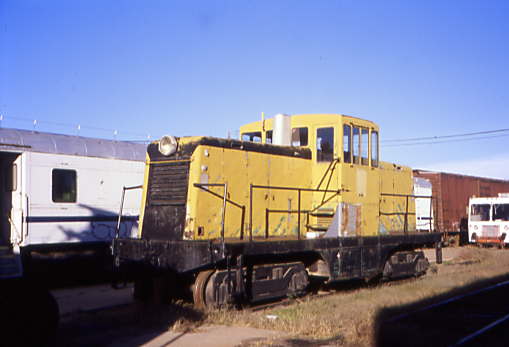
Koppers Corporation 44 ton switcher, ex. Broderick Woo Products Corporation, exx. Morrison Knudsen 84, nee Fibreboard Corporation 1, built by General Electric in 1947.
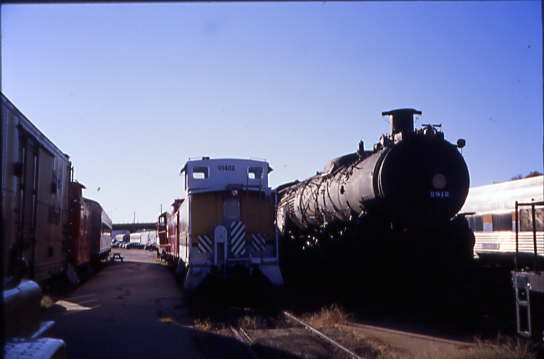
Santa Fe 4-8-4 2912, built by Baldwin in 1929. This was one of the last Santa Fe 4-8-4s shopped at the company's Albuquerque Shops before they were closed in March 1954. The locomotive hauled the last Santa Fe steam freight into Clovis, New Mexico from Slaton, New Mexico on the morning of August 4, 1954.
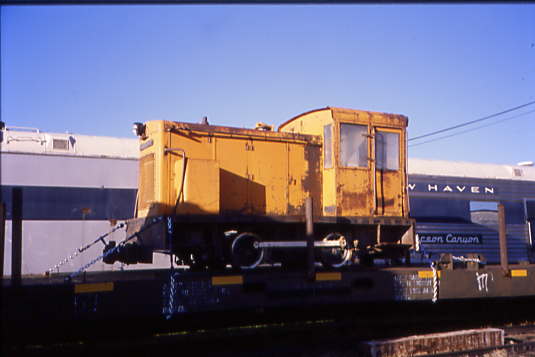
Colrado Fuel and Iron 25 ton narrow gauge switcher 3 built by General Electric in 1947.
Amtrak coach 5409, ex. Seaboard Air Line 217, nee Atlantic Coast Line 217, built by Budd in 1946.
VIA Rail buffet-lounge-observation car 1099 "Bedford", nee Canadian National 1099, built by Budd in 1954.
Denver and Rio Grande Western box car 67508 built by Pressed Steel in 1946 and Denver and Rio Grande Western box car 67996 built by Pressed Steel in 1946.
United States Army 40 ton crane C-289 built by American Hoist in 1953.
Denver and Rio Grande Western caboose 01432 built by the Denver and Rio Grande Western in 1944.
Missouri Pacific caboose 1234 built by the railroad in 1951 and numbered 123-4.

Overview of the museum area.
Burlington Northern maintenance-of-way kitchen car 951868 1985, nee box car built in 1956.
Burlington Northern kitchen car 951864 converted from a 50 foot box car.
Amtrak coach 5409, ex. Seaboard Air Line 217, nee Atlantic Coast Line 217, built by Budd in 1946.
Amtrak slumbercoach 2004 "Toledo Harbor", ex. Penn Central 4206, exx. New York Central 10816, nee New York Central 10379 built by Budd Company in 1949.
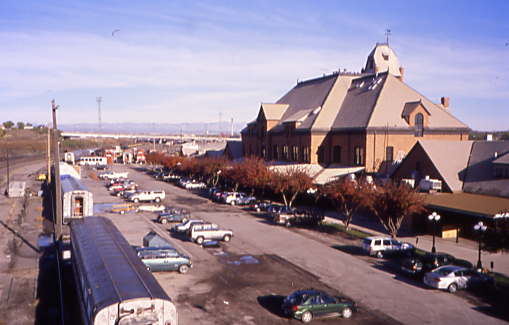
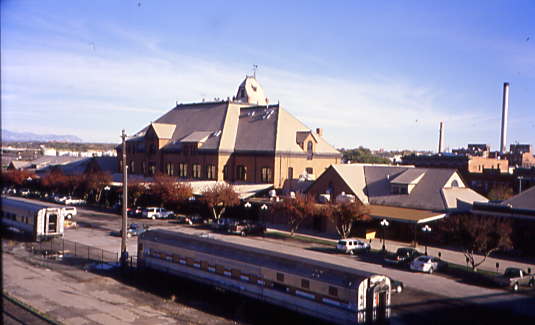
Desiring a larger view of the museum area and noticing the Union Avenue bridge to the east, I walked around some buildings and up to the bridge. I saw Chris speaking to someone so hurried back and saw Chris in the cab of Colorado and Wyoming GP7 104. Inside, I met Ron of the Pueblo Railway Museum and we chatted about the museum, their plans for a new home and more track for their excursion run. He had tried to start 104 earlier this morning so we could have a ride but the locomotive would not start because of the cold temperatures. We thanked him for having us and left this very interesting railroad museum.
Chris needed to call the business he runs so we drove around Pueblo until we spotted a telephone then drove north on Interstate 25, stopping at a Shell station in Fountain where I purchased a candy bar and Chris sent a fax. We continued into Colorado Springs, exiting on Fillmore Street, then turned right over the Joint Line and right again onto Steel Drive Road, until we reached the end at the Pikes Peak Historical Street Railway.
| RETURN TO THE MAIN PAGE |